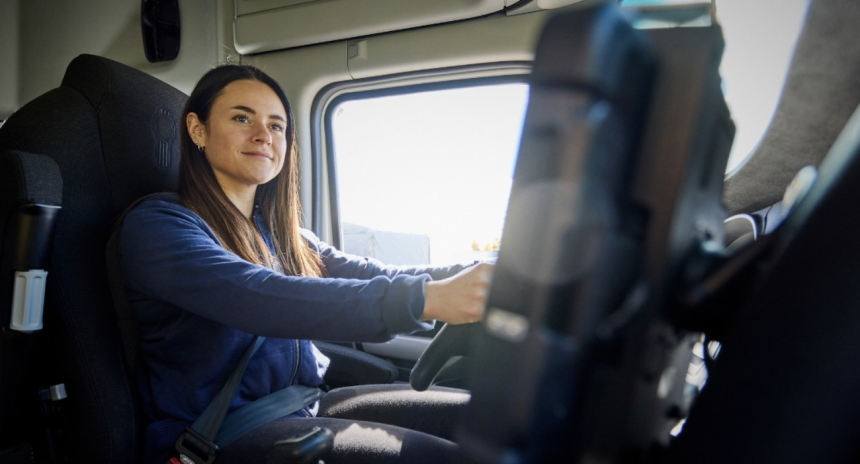For professional drivers who compete at high speeds, safety is not just a priority—it’s essential for survival and peak performance. Advances in technology have brought forth a range of innovative solutions that enhance the safety of drivers, allowing them to maintain control, stay protected, and focus on the race ahead. Here are the cutting-edge safety solutions designed to support high-speed professional drivers.
Proactive Safety Measures for Accident Prevention
One of the most important aspects of ensuring safety in high-speed racing is taking proactive steps to prevent accidents before they happen. This starts with rigorous vehicle maintenance. Regular inspections and upkeep play a critical role in making sure the vehicle operates at peak performance. Staying ahead of potential issues such as tire wear, brake function, and suspension integrity can mean the difference between a seamless race and a catastrophic failure.
Technology now plays a significant role in proactive maintenance. Advanced diagnostic tools can scan and detect potential issues with incredible precision, allowing teams to address them before they become serious problems. Automated alerts and smart sensors integrated into the vehicle can monitor key systems in real time, giving drivers and their teams the data they need to make informed decisions. This preemptive approach helps ensure that drivers remain safe and that their vehicles are equipped to handle the intense demands of high-speed racing.
High-Tech Water Delivery Solutions With the Maglock Kit
Hydration may not be the first thing that comes to mind when thinking of racing safety, but it is crucial for driver performance and well-being. Dehydration can lead to much slower reaction times, reduced focus, and even dangerous fatigue. High-speed races often take place in hot and demanding environments where maintaining hydration is a constant challenge. This is where innovative hydration solutions like the Maglock kit come into play.
This kit provides a seamless way for drivers to access water without losing concentration or taking their hands off the wheel. Designed for easy integration, this solution offers a secure connection for hydration systems that can be quickly detached in emergencies. This technology ensures that drivers can maintain proper hydration levels, boosting their focus and reaction time, even in the most intense racing conditions.
Fire-Resistant Gear and Smart Clothing
Safety gear has evolved significantly over the years, with new materials and technology providing superior protection. Modern fire-resistant suits, gloves, and helmets are designed not just to withstand flames but to do so while maintaining comfort and flexibility. The development of smart clothing has taken this a step further by incorporating sensors that monitor a driver’s vital signs, such as heart rate and temperature.
These smart suits can provide real-time data that helps teams assess a driver’s physical condition, enabling them to make quick decisions about hydration, cooling strategies, or the need for a pit stop. For example, if a driver’s temperature spikes to dangerous levels, the team can activate additional cooling measures or advise the driver to slow down for safety.
Advanced Helmets for Impact Protection and Data Feedback
A helmet is one of the most critical pieces of safety equipment for any high-speed driver. Recent advancements have introduced helmets that not only provide enhanced impact protection but also include features such as built-in communication systems and heads-up displays. These helmets can relay crucial information directly to the driver, such as lap times, tire pressure, and proximity warnings.
The inclusion of impact sensors in modern helmets is another innovative step forward. These sensors can detect the force and direction of an impact, allowing medical teams to assess the severity of a crash more effectively. By analyzing this data, they can determine whether a driver needs immediate medical attention or if they can safely continue racing.
Adaptive Seatbelts and Restraint Systems
Traditional seatbelts and harnesses have evolved into highly adaptive restraint systems that can respond dynamically to the conditions of a race. Modern systems include sensors that monitor G-forces and automatically adjust the tension of the seatbelt to keep the driver securely in place. This is especially crucial in sudden maneuvers or during high-impact collisions, as it reduces the risk of injury by ensuring that the driver’s body remains stable and well-supported.
These adaptive systems are designed to work in tandem with the vehicle’s electronic stability control and braking systems, providing an added layer of safety when quick movements are necessary. They are also built to release efficiently if the driver must exit the vehicle quickly during an emergency. With advanced restraint technology, drivers can have greater confidence that their safety is managed both actively and passively.
Lynn Martelli is an editor at Readability. She received her MFA in Creative Writing from Antioch University and has worked as an editor for over 10 years. Lynn has edited a wide variety of books, including fiction, non-fiction, memoirs, and more. In her free time, Lynn enjoys reading, writing, and spending time with her family and friends.















